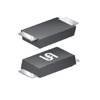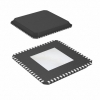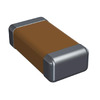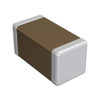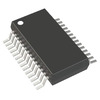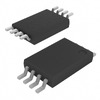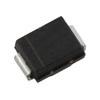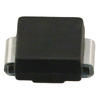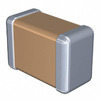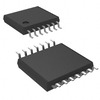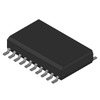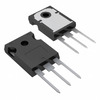Comprehensive Comparison: LM324 vs LM358 Operational Amplifiers
Explore the complex of operational amplifiers, where minor details can have a major influence. This article delves into a compelling comparison of two widely used op-amps: the LM324 and the LM358. Learn how slight variations in materials and manufacturing techniques can dramatically impact their performance in electronic circuits. We’ll examine the distinctive features, applications, and design implications of each amplifier, highlighting how these differences play a role in circuit design.Catalog

What is the LM324?
The LM324 is an integrated circuit featuring four operational amplifiers in one package, providing with a range of possibilities. This quad op-amp operates smoothly with a single power source and can accommodate differential input voltages up to the supply voltage. A notable attribute of the LM324 is its low input offset voltage, approximately 2mV, allowing for enhanced precision in delicate tasks. It sustains reliable performance across a temperature range of 0°C to 70°C, underlining its durability with a maximum junction temperature of 150°C. Such characteristics ensure adaptability and consistent output across various environments. The LM324 and similar op-amps are versatile components capable of executing mathematical operations such as addition, subtraction, integration, and differentiation. Their adaptability finds applications across numerous electronic domains.
What is the LM358?
The LM358 distinguishes itself as a dual operational amplifier, comprising two op-amps in a single enclosure. It excels in single-supply scenarios, functioning efficiently from 3.0V to 32V. The LM358 is engineered with low quiescent current demands, making it ideal for battery-operated devices where conserving energy is needed. Its input voltage range can extend to the negative supply, reducing the necessity for extra biasing components. The output voltage approaches the lower supply level, making it suitable for applications needing low-voltage performance. In use, the LM358 often appears in battery-powered applications because of its limited power consumption. Such thoughtful deployments highlight the op-amp's ability to harmonize efficiency with performance.
Specifications: LM324 vs LM358
|
Specification |
LM324 |
LM358 |
|
Supply Voltage |
32V |
32V |
|
Power Dissipation |
1130mW (DIP) |
830mW (DIP) |
|
Input Offset Voltage |
5mV |
5mV |
|
Input Offset Voltage Drift |
30µV/°C (max.) |
20µV/°C (max.) |
Features: LM324 vs LM358
LM324 Features
• Low supply current: 700 μA (consistent across voltages).
• Low input bias current: 45 nA (temperature-compensated).
• Low input offset voltage: 2 mV.
• Low offset current: 5 nA.
• Input common-mode range includes ground.
• Differential input voltage equals supply voltage.
• Output voltage swing: 0 V to (V - 1.5 V).
• Internally frequency-compensated for stability at unity gain.
• High DC voltage gain: 100 dB.
• Wide unity gain bandwidth: 1 MHz (temperature-compensated).
• Flexible power supply:
Single: 3 V to 32 V
Dual: ±1.5 V to ±16 V
LM358 Features
• Common-mode range includes the negative supply
• Works with single or dual power supplies
• Operates on 3.0 V to 32 V single supply
• Low input bias currents
• Built-in internal compensation for better performance
• ESD clamps on inputs for durability
• "NCV" models are automotive-grade (AEC-Q100 and PPAP compliant)
• Eco-friendly: lead-free, halogen-free, and RoHS compliant
• Protects outputs from short circuits
• True differential input stage for precision
Internal Circuitry: LM324 vs LM358

Absolute Maximum Ratings: LM324 vs LM358
LM324 Absolute Maximum Ratings

LM358 Absolute Maximum Ratings

Electrical Characteristics: LM324 vs LM358
LM324 Electrical Characteristics

LM358 Electrical Characteristics

Applications: LM324 vs LM358
LM324 Applications
Transducer Amplifiers: Converts various forms of energy into electronic signals, improving measurement accuracy.
Filter Circuits: Selects specific frequencies to enhance signal quality and reduce noise.
Voltage Followers: Maintains steady voltage levels, ensuring circuit stability.
DC Gain Blocks: Provides consistent signal amplification, useful in stabilizing outputs against variable supply voltages.
Summer Circuits: Merges multiple input signals, aiding in digital-to-analog conversion.
Loop Control Comparators: Compares signals against reference levels for balanced feedback systems.
LM358 Applications
General Signal Amplification: Processes differential signals in analog systems.
Oscilloscopes: Enhances signal processing for precise waveform generation and analysis.
Active Filters: Improves filtering accuracy for both AC and DC signals.
4- to 20-mA Current Loop Systems: Best in industrial automation for reliable long-distance signal transmission.
Versatile Power Options: Operates with single or split power supplies, suitable for various application requirements.
Conclusion
The LM324 and LM358 operational amplifiers offer distinctive features suited for a variety of electronic applications. Each amplifier has unique specifications that influence their performance and suitability for different circuit requirements. Whether you need multiple op-amps in one package or low power consumption for battery-operated devices, the choice between LM324 and LM358 depends on the specific needs of your circuit. Understanding their differences is needed for designing effective and efficient electronic systems.
About us
ALLELCO LIMITED
Read more
Quick inquiry
Please send an inquiry, we will respond immediately.
Frequently Asked Questions [FAQ]
1. What are the major differences between LM358 and LM324?
The LM358 comes in a DIP-8 casing with two operational amplifiers, while the LM324 is encased in a DIP-14, housing four operational amplifiers. With a typical power dissipation of 830mW, the LM358 contrasts with the LM324's 1130mW, suggesting a different approach towards managing heat.
2. What are the limitations of LM324?
Operating characteristics reveal that the LM324's output is limited to 1.5 volts below the positive supply rail, posing challenges for high-output requirements. This trait becomes a point of reflection for crafting circuits that demand outputs nearing the supply rails, prompting them to consider alternative solutions or supplemental circuit strategies to achieve desired performance.
3. Is LM324 a single supply?
The adaptability of the LM324 shines through its capacity to function with a single voltage supply of 3 V to 32 V or dual supplies of ±1.5 V to ±16 V. This range offers opportunities for integration across diverse applications, attracting designers who value this flexibility. Awareness of the voltage requirements plays a role in ensuring that the LM324 fits harmoniously within an array of system architectures.
4. What is the difference between LM358 and LM321?
In assessing the LM321 and LM358, the former is noted for its single-channel in a compact 5-pin package, while the latter provides dual-channel functionality in an 8-pin design. This distinction invites contemplation for applications prioritizing minimal pin count in tight design spaces versus those necessitating multiple channels within restricted PCB dimensions.
5. What is a good alternative to LM358?
The LM2904, LM2902, LM158/LM258, and LM741 emerge as notable substitutes for the LM358, each tailored with unique specifications suited for diverse electronic ambitions. Selecting from these alternatives involves a nuanced examination of attributes like power consumption, frequency response, and physical dimensions, guiding towards achieving optimal alignment with specific project goals and innovative aspirations.

Comprehensive Overview of Up/Down Counters: Circuit Design and 74193 IC Explained
on November 28th

OP07 Operational Amplifier IC: Pinout, Equivalents, and Applications
on November 28th
Popular Posts
-

Understanding Power Supply Voltages in Electronics VCC, VDD, VEE, VSS, and GND
on June 13th 24175
-

USB-C Pinout and Features
on June 13th 21286
-

The Ultimate Guide to Wire Color Codes in Modern Electrical Systems
on January 1th 17465
-

TL494 Current-Mode PWM Controller IC
on January 1th 14733
-

Current Divider Circuits and Effective Use of the Divider Formula
on January 1th 13630
-

FET (Field Effect Transistor) Circuit Symbols
Field-Effect Transistors (FETs) are widely used in modern electronics and are found in everything from simple devices to complex digital systems. To work with these transistors effectively, it's helpful to understand the symbols that represent different types of FETs. These symbols do more than just show what the transistors look like—they also provide information about how each transistor works ...on January 1th 13440
-

Quality (Q) Factor: Equations and Applications
The quality factor, or 'Q', is important when checking how well inductors and resonators work in electronic systems that use radio frequencies (RF). 'Q' measures how well a circuit minimizes energy loss and impacts the range of frequencies the system can handle around its main frequency. In systems with inductors, capacitors, and tuned circuits, a higher 'Q' means the circuit focuses more on a spe...on January 1th 13393
-

Understanding and Building Op-Amp Based Peak Detectors
In the world of electronic circuit design, peak detectors are key tools for accurately analyzing and processing signal strengths. These circuits are designed to find and keep the highest signal amplitude, making sure the peak value is precisely captured and held as needed. Peak detectors are important in many fields, from improving audio quality in communication systems to aiding medical diagnoses...on June 13th 12497
-

LM741 Op-Amp: Features, Specifications, and Applications
The LM741 op-amp is a popular and flexible electronic component. This article goes over the pin layout, functions, specs, and different ways the LM741 can be used, while also comparing it to similar models like the LM358.Catalog1. What Is the LM741 Op-Amp?2. The LM741 Pin Configuration3. The LM741 Pin Functions4. Specifications of the LM7415. Features of LM7416. LM741 Circuit Applications7. LM741 ...on June 13th 12034
-

ST-LINK/V2: Pinout, Specifications, and Datasheet
This article takes you through the ST-LINK/V2, a well-regarded tool that amplifies connectivity and functionality. Key topics will cover its pinout configuration, delve into its 3D model, and spotlight specifications. Such understanding expands the horizons of STM microcontrollers in diverse applications. By grasping these interfaces and tools, you can transform embedded systems, opening doors to ...on January 1th 11579




